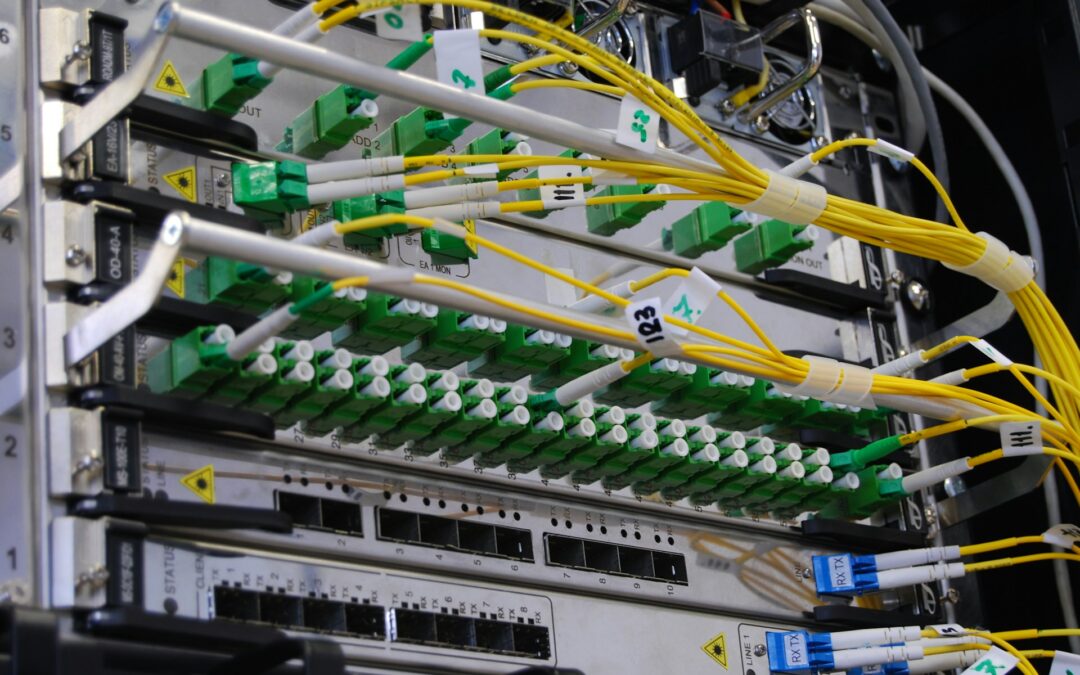As the cold weather starts to settle in around Boston, many local businesses are focused on keeping employees warm and operations steady. But one thing that’s often overlooked as temperatures drop is the condition of a company’s network systems. Winter weather brings more than frozen sidewalks and parking lots. It creates real challenges for your network infrastructure, especially if it’s not built to handle those frigid conditions. Cables, routers, switches, and access points can all run into trouble if they aren’t protected properly from the elements.
When snow piles up and the wind picks up speed, network issues can quietly sneak up on you. Maybe an outdoor connection freezes and cuts out, or a drafty storage room knocks out signal strength. Now’s the time to start thinking about how winter can disrupt your setup and what you can do to avoid downtime or equipment damage. Getting ahead of these issues helps keep your system stable so you’re able to run your business smoothly even when the weather outside is anything but.
Understanding Cold Weather Effects On Network Infrastructure
Cold weather can impact your network equipment in ways that aren’t immediately obvious. A lot of people think power outages are the only concern during a New England winter, but drops in temperature and moisture buildup can also play a big role in network problems. If your infrastructure isn’t backed by good insulation or is partly located in places like basements, attics, or outdoor enclosures, you’re more likely to run into trouble.
One big issue is the risk of condensation. When warm indoor air meets cold surfaces, water can collect on hardware or cable connectors. That moisture can cause corrosion over time or make components short-circuit. Then there’s the effect freezing temperatures can have on exposed wiring outside a building. When cables get stiff, they crack more easily. A cracked outer layer lets moisture in, and that’s when signal loss starts to happen.
Here are a few common signs that cold weather may be affecting your network:
– Unstable internet or frequent disconnects from devices
– Slower-than-normal data transfers despite no changes in activity
– Network hardware making strange noises or generating unusual heat
– Physical damage on outdoor cable jackets
If any of this sounds familiar, it may be time to check areas near external walls, open ceilings, or unheated closets where your gear is located. In Boston, where winters are long and temperatures can drop fast, even indoor systems feel the freeze if they aren’t properly sheltered. The sooner you figure out the weak spots in your setup, the less likely you are to face mid-winter network meltdowns.
Best Practices For Outdoor Network Cabling
Outdoor network cables are especially at risk during harsh winters, but there are ways to keep them safe without needing a full rewire. Protecting them early in the season can stop you from running into surprise outages when January hits.
Some simple and reliable practices include:
1. Use weatherproof enclosures
Keep key connections sealed up tight. Choose enclosures that are waterproof and rated for extreme cold so they won’t crack or leak.
2. Switch to cold-rated cable types
Not all cables are made the same. Cables labeled for outdoor or direct burial use are tougher and stand up better against wintry conditions.
3. Add extra insulation where needed
Wrap exposed areas with insulating materials or run them through protective conduit to prevent frost from settling in.
4. Elevate where possible
Avoid running cables through puddle-prone areas or near clogged gutters. The higher off the ground, the less snow and water they sit in.
5. Perform regular checks
Schedule weather-related maintenance just like you would with heating systems or snow removal. Keep an eye on joints, splices, and any outdoor gear boxes.
An example we’ve come across involved a small Boston business that ran network cables across a rear alley between buildings. When the snow melted and refroze, water inside the conduit expanded, splitting the cable without anyone noticing it at first. The company dealt with weak Wi-Fi and unresponsive devices until a tech found the ruptured line buried under ice. Taking the right steps ahead of snow season could’ve saved them days of downtime.
If your business has any network links outside or even in semi-open garages or sheds, don’t leave them exposed to whatever winter brings. A little preparation goes a long way in keeping your connections alive through the coldest months.
Ensuring Indoor Equipment Reliability
Outdoor cables might get more attention because they’re exposed, but indoor equipment also needs proper care during Boston winters. When heating systems overcompensate in some areas or fail in others, it creates temperature swings that can affect how your network gear performs. Routers, servers, switches, and wireless access points still run best in a stable, controlled environment.
Start by checking where your main networking equipment lives. If it’s in a drafty storage area or up against an exterior wall, it may not be getting the temperature consistency it needs. Fluctuations can also bring humidity problems. When air gets too dry or too damp, it can cause static electricity or corrosion on internal components, which can impact uptime.
Here are a few ways to keep your indoor setup in better shape:
– Use temperature control units or fans to reduce heat pockets around network gear
– Avoid blocking ventilation grills on routers or modems with storage boxes or clutter
– Keep equipment away from areas near windows, vents, or HVAC blowers
– Run a portable dehumidifier in rooms prone to condensation buildup
– Clean dust from vents and outlets regularly to prevent overheating
One Boston retailer had their modem and switch placed near a window in a backroom, mostly because it was convenient during setup. They didn’t think twice about it until winter rolled around. After the temperatures dropped and condensation started forming near the window frame, their gear began to short out overnight. As simple as it sounds, relocating network equipment to the center of the room and adding a small heater on a timer brought things back to normal.
It’s often these kinds of small changes that make the biggest difference during the colder months. Keeping indoor equipment running smoothly isn’t just about temperature. It’s also about consistency and clean airflow.
The Value Of Professional Network Integration Services
When winter issues pop up, it’s easy to assume you’re dealing with something minor like a bad cable or a frozen router. But problems with your network infrastructure are often layered, especially if you’re working with aging components or systems that weren’t designed with severe weather in mind. That’s where expert support makes a big impact.
Professional integration teams don’t just plug things in. They look at how every part of your system works together. From your Wi-Fi coverage to the way your cables are routed indoors and out, trained specialists can detect things you might not catch until equipment fails. It’s more than regular upkeep. It’s about having a plan that works during high-stress periods like the middle of winter.
Here’s where professional network teams can help:
– Conduct physical walkthroughs to check for weaknesses in layout or exposure
– Test wiring paths and junctions to make sure insulation is performing as it should
– Identify long-term risks from seasonal conditions like moisture, snowmelt, and freezing
– Recommend more efficient ways to reroute cables or reposition indoor hardware
– Offer structured plans for upgrades instead of last-minute fixes
Many businesses in Boston deal with older buildings. That makes network planning a bit trickier since older construction might not allow for smooth airflow or quick access to walls and ceilings. Having an expert on-site helps you avoid guesswork and more importantly, shifts the focus from reacting to problems to preventing them.
Professional integrators can also assess how well your current system can handle winter storms, backup failures, and short-term outages. Maybe a cable went through insulation years ago and nobody ever fixed it. Or maybe an indoor switch is always overheating because it’s next to a boiler. Fixes like these can be small but provide a big payoff once winter weather puts pressure on the system.
How to Stay One Step Ahead This Winter
Winter in Boston doesn’t give business networks any breaks. Cold weather tests your infrastructure in ways that don’t always show up until something stops working. Equipment can freeze. Cables can crack. Systems can shut down without warning. But with a little prep and the right support, it’s totally possible to keep your setup reliable all season long.
Focus on both the inside and outside. Protect your outdoor wiring with the right covers and placement. Keep your indoor equipment away from damp surfaces or drafty walls. Clean, inspect, and monitor your setup whenever the temperature takes a dive. These aren’t huge changes. They’re small moves that prevent major headaches later.
The best way to stay ahead of network breakdowns is by treating seasonal shifts like part of regular infrastructure care. You winterize your car. You clear sidewalks. Why not add your business network to that checklist? Being proactive means fewer surprises, more consistency, and a lot less scrambling when the cold weather rolls in hard.
It’s time to ensure your network is ready for the Boston winter by taking the necessary steps to safeguard your equipment. With the proper precautions, your business will continue running smoothly without disruptions from harsh weather. Explore how ASCIO Wireless can enhance your network’s resilience by focusing on strong and effective infrastructure.

